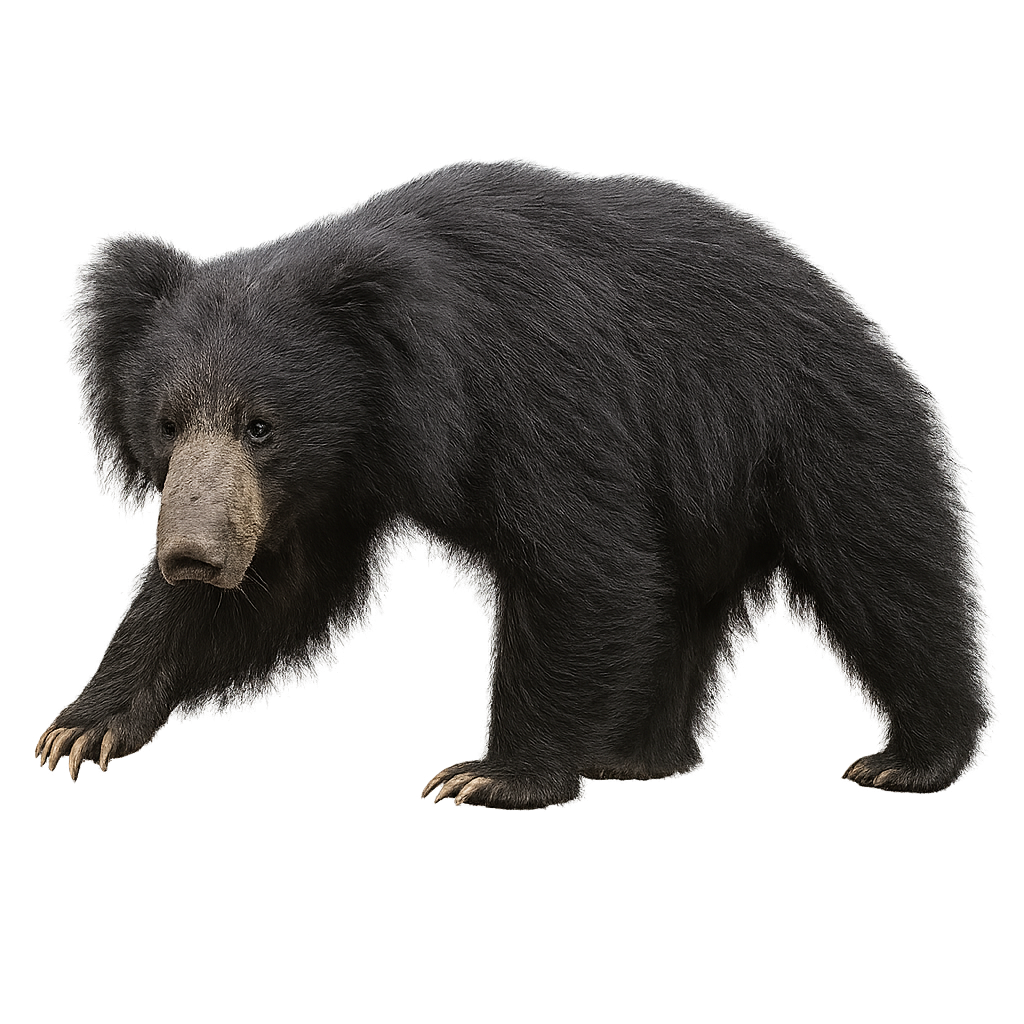Your wildlife photography guide.
Explore the sloth bear in detail, study its behavior, prepare your shots.
Where to observe and photograph the sloth bear in the wild
Learn where and when to spot the sloth bear in the wild, how to identify the species based on distinctive features, and what natural environments it inhabits. The WildlifePhotographer app offers tailored photography tips that reflect the sloth bear’s behavior, helping you capture better wildlife images. Explore the full species profile for key information including description, habitat, active periods, and approach techniques.
Sloth bear
Scientific name: Melursus ursinus

IUCN Status: Vulnerable
Family: URSIDAE
Group: Mammals
Sensitivity to human approach: Suspicious
Minimum approach distance: 30 m
Rut period: June to July
Gestation: 210-215 jours
Births: January to February
Habitat:
Tropical and subtropical forests, savannas, and mountain forests of India and Sri Lanka
Activity period :
Mainly active at night, generally discreet during the day.
Identification and description:
The Sloth Bear, also known as the lip bear, is a large carnivorous mammal primarily found in the tropical and subtropical forests of India, Sri Lanka, Bangladesh, and Myanmar. It measures about 1.4 to 1.8 meters in length and weighs between 50 and 150 kg. What particularly distinguishes the Sloth Bear is its face, which has highly mobile lips and long fur around the mouth, giving it its name. Its coat is generally black with white markings on the chest and throat, forming a sort of crescent shape. The Sloth Bear is an omnivore, feeding on fruits, honey, insects, roots, and small animals. Although it is primarily terrestrial, it is also capable of climbing trees. Due to habitat loss and poaching, this species is currently listed as vulnerable.
Recommended lens:
200 mm – adjust based on distance, desired framing (portrait or habitat), and approach conditions.
Photography tips:
Use a telephoto lens to photograph the sloth bear, which is often more active at night or at dusk. Look to capture its unique behaviors, such as foraging for food or moving through the forest. Be discreet and respect the safety distance, especially when they are rummaging for insects.
The WildlifePhotographer App is coming soon!
Be the first to explore the best nature spots, track rutting seasons, log your observations, and observe more wildlife.
Already 1 432 wildlife lovers subscribed worldwide

